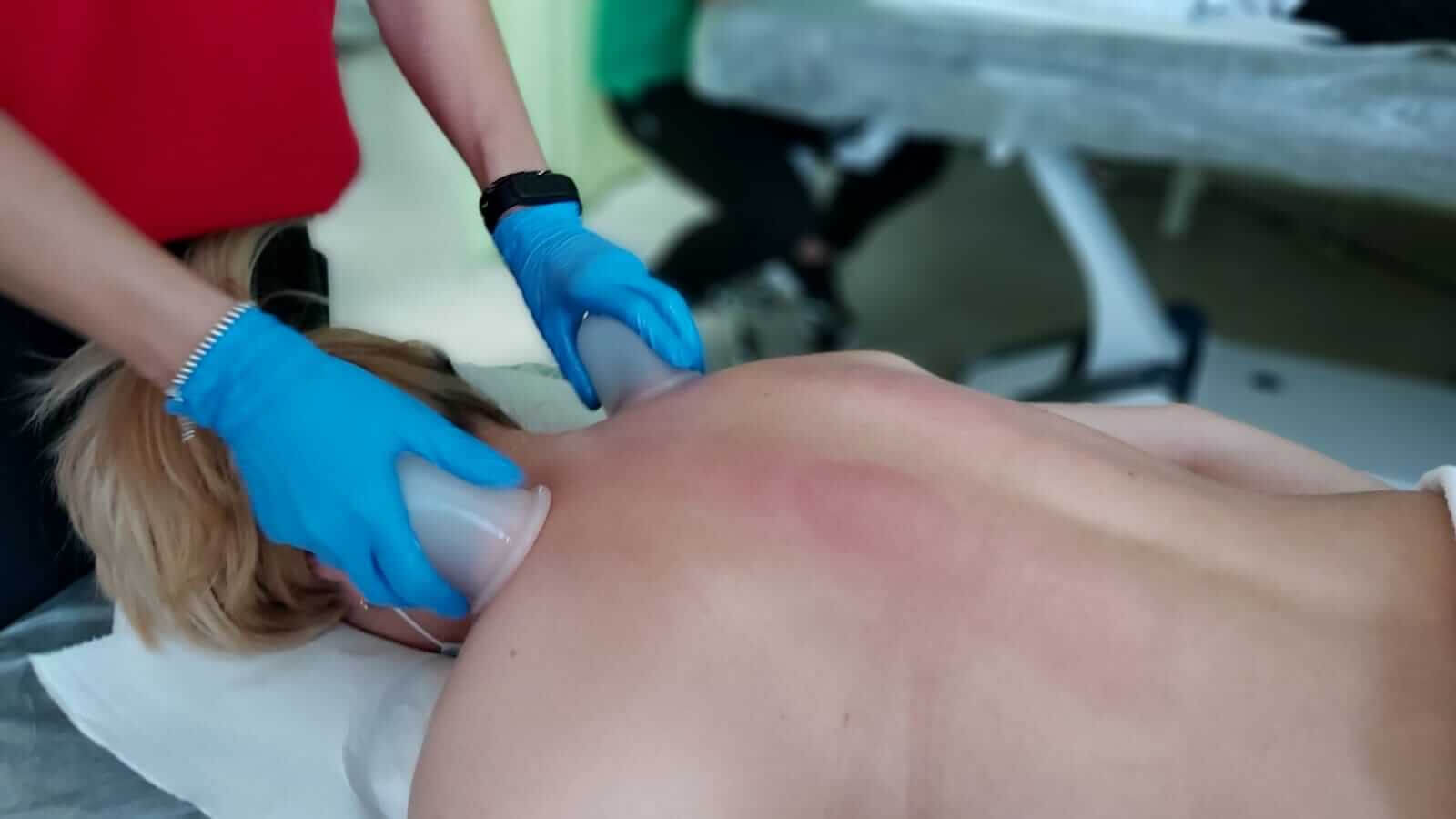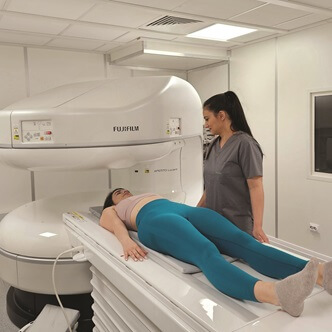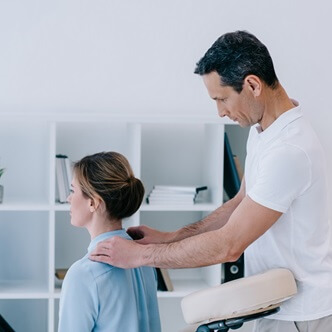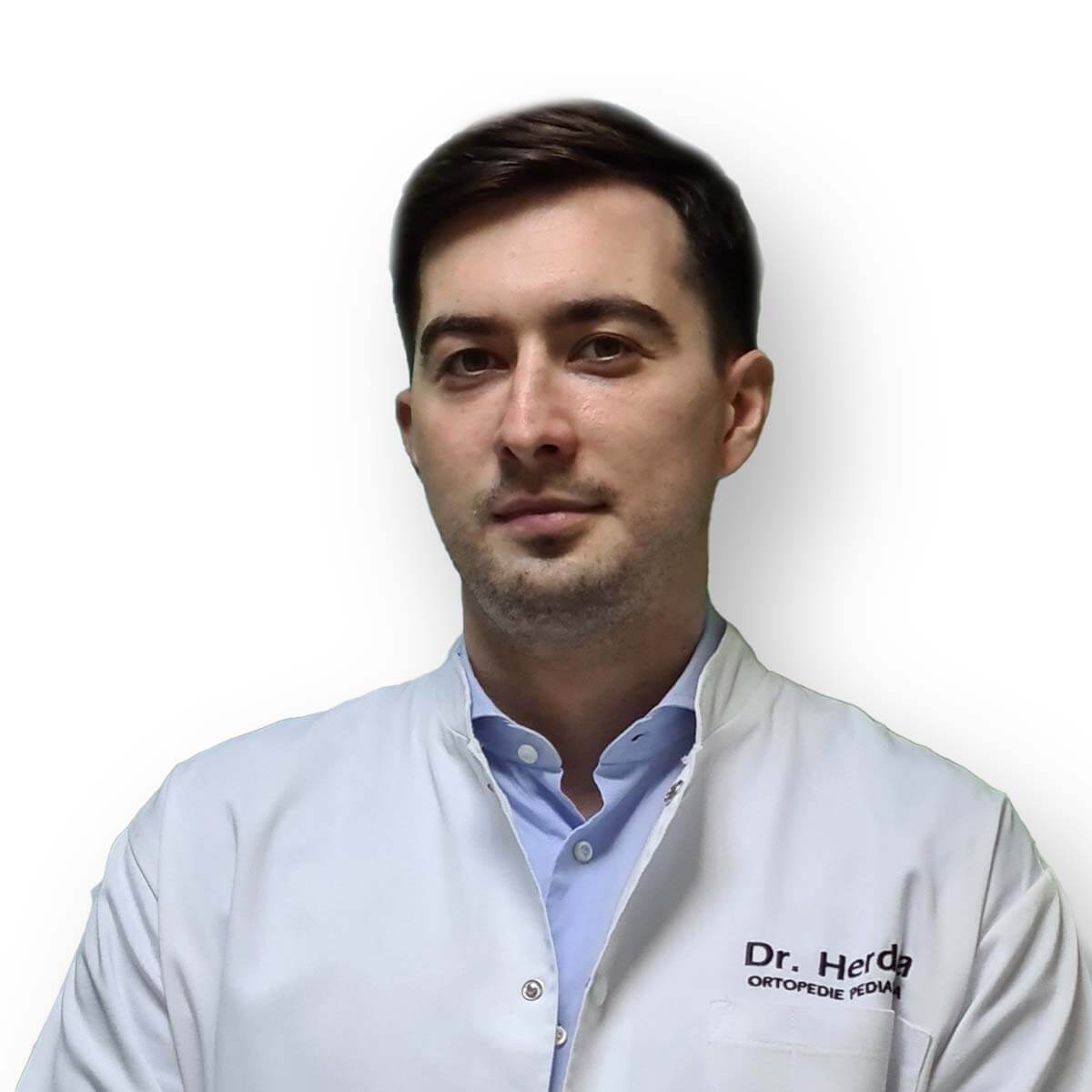See details
READ MORE 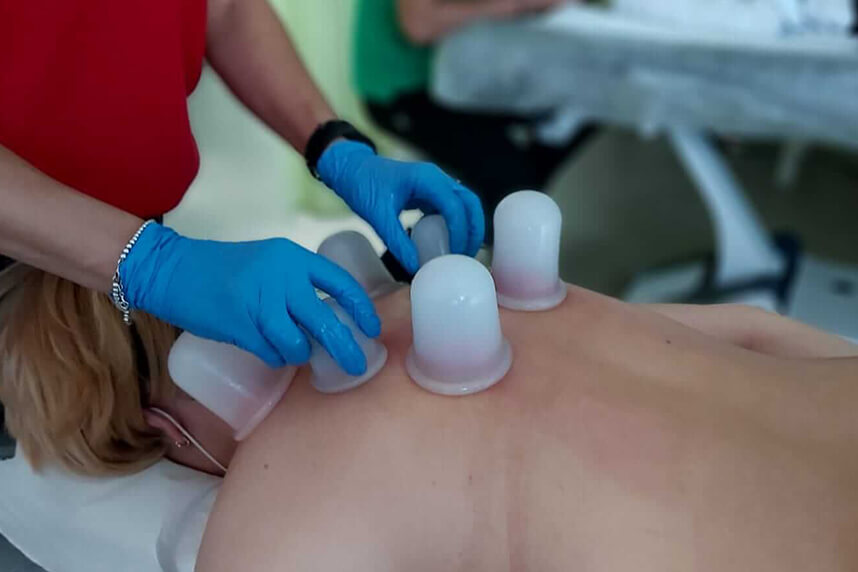
What is Cupping therapy?
Cupping therapy was first discussed in ancient medical textbooks in the West and has been described as a medical practice used by the Egyptians. Hippocrates used to do this method for internal diseases. Cupping therapy has also been practiced in Europe, Asia, and Africa. This therapy is an alternative form of medicine and is probably better known as traditional Chinese medicine, as is acupuncture.
The therapy was used with the help of bare animal horns and was a method used to treat snake bites and skin lesions. This method is supposed to remove toxins from the body. The application of suction cups over the years has evolved from animal horns to the bamboo cup and then to the glass cup, as it is used today. The suction cups can also be made of clay and silicone materials that can withstand exposure to high temperatures during the heating process.
Several other cultures have used cupping therapy as a method of treating several different conditions. The Chinese have reported using suction cups during surgical procedures as a way to help divert blood flow from the surgical site. American and European doctors have used suction cups to treat more common conditions, such as common colds and chest infections, and congestion.
Cupping therapy, also known as Hijama therapy in some Arab cultures, is a fascinating alternative form of medicine that has been mentioned in historical accounts dating back to about 5,000 years ago. Chinese suction cup therapy is often used in conjunction with better-known forms of traditional Chinese treatments, and methods such as acupuncture and acupressure.
The basic idea behind suction cup therapy is to place glass cups or silicone cups on the patient's skin to create a vacuum so that blood is drawn to the surface of the skin in certain parts of the body that need healing. Traditional Chinese practitioners discuss different areas, or meridians, of the body that are used to transfer energy. They believe that each body has twelve different meridians and the treatment can be applied to each meridian for a variety of reasons.
Alternative medicine is defined as any form of medical treatment that is used in place of traditional therapies or traditional and modern medicine and scientific practices. Alternative medicine claims to provide healing effects when other forms of drug therapy have not been shown to work. Alternative medicine is growing rapidly in popularity as a way to promote the same healing properties that can be found in traditional medicine, but without the risk of the same side effects.
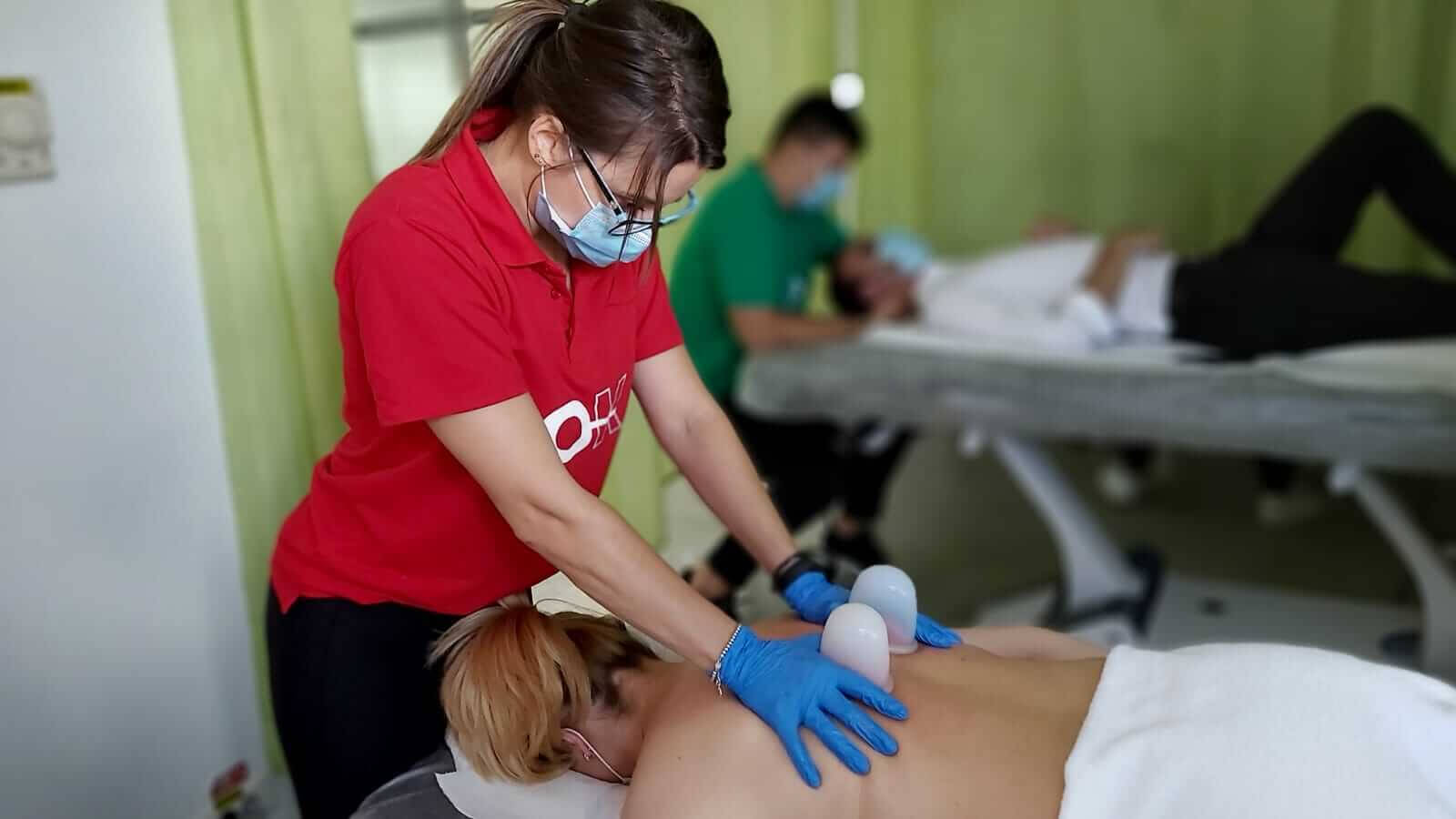 | |
Types of cupping therapy
Three traditional methods of suction cup therapy were used. These methods include dry therapy, wet therapy and massage therapy.
Dry cupping
Wet cupping
Massage cupping
During massage therapy, the therapist can move the cups to several areas on the skin, thus being recognized as a form of massage therapy. Suction cup massage has also been used to lose weight and reduce cellulite. Silicone therapy cups are used more for this form of therapy because these cups are softer and more flexible, which makes them slide more easily on the patient's body.
In massage cupping, the muscles tend to apply pressure. Negative pressure is better at helping to manage pain than tissue compression. By suction cup therapy, the skin, tissue, and muscles are pulled up to increase circulation and provide pain management.
Massage cupping also uses different oils so that the glass can easily slide on the patient's back. Suction cup massage is considered alternative medicine to help manage pain and induce feelings of relaxation and stress relief to relieve tension.
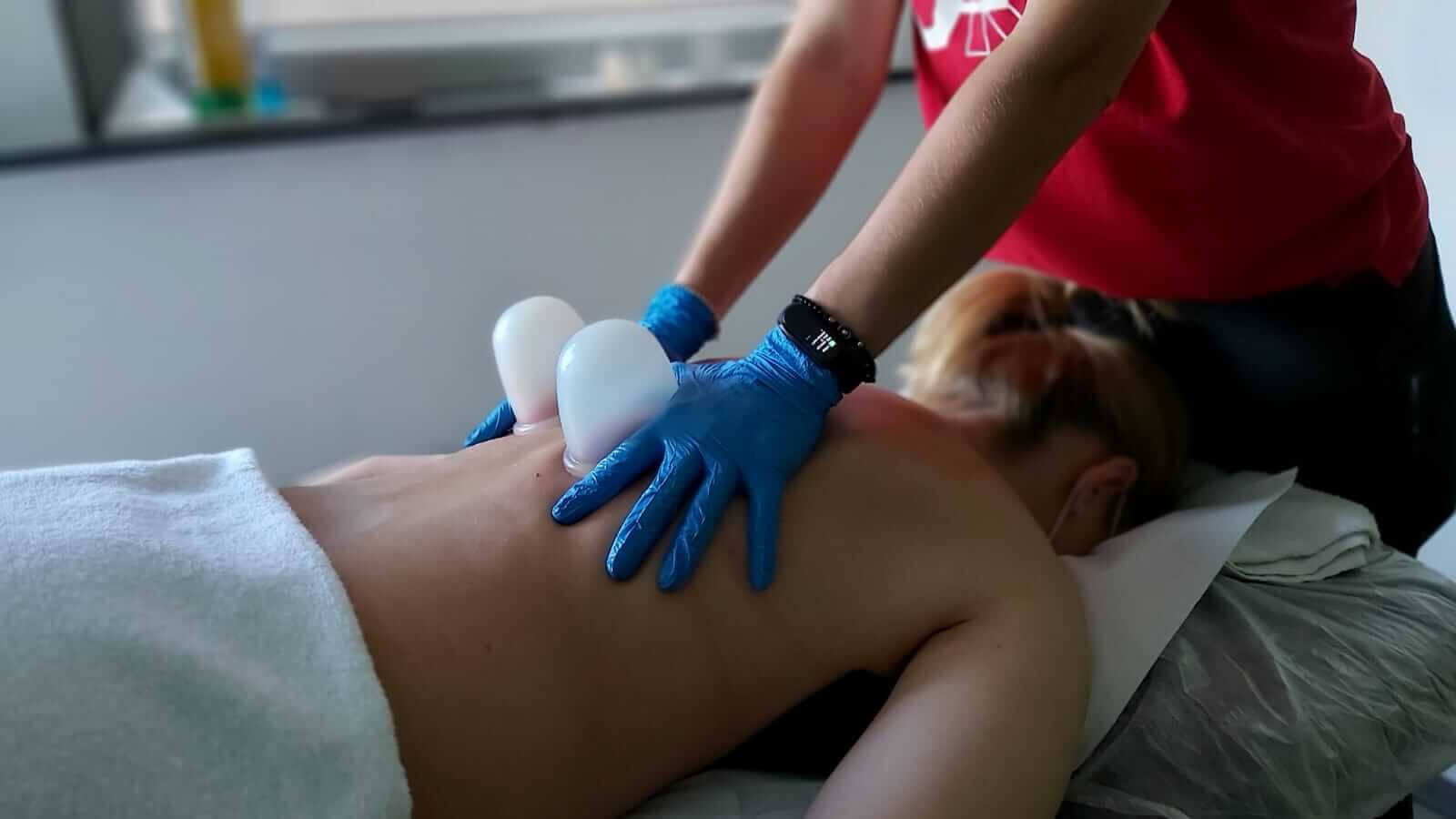 | 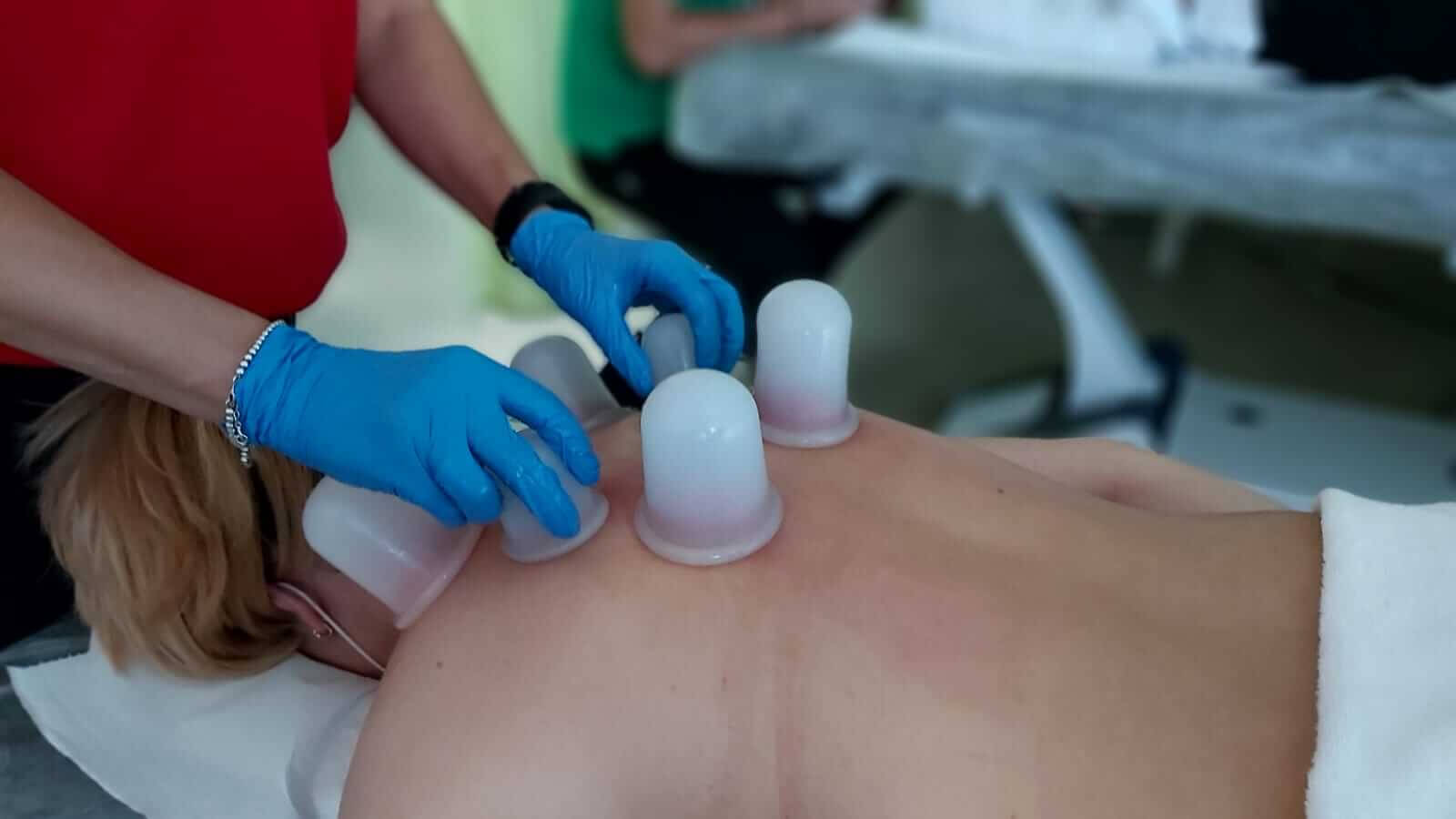 |
The benefits of cupping
Although modern medicine is still undecided about the full benefits of this therapy, scientists are increasingly aware that, in the hands of expert practitioners, it could help many patients suffering from several conditions.
Cupping several benefits, including helping to promote blood flow and increase blood circulation to muscles and tissues, supply oxygen to cells, remove nodules, and release and drain excess fluid and toxins.
Suction cup therapy is based on the belief that the use of aspiration or vacuum at certain points on a patient's body can help eliminate obstructions in the natural energy pathways inside the body and therefore cure diseases.
Variations in the technique, such as wet therapy, in which the skin is pricked to remove a small amount of toxic blood and other harmful substances from the body, can help prevent and treat disease. When combined with acupuncture, the needles are first inserted into the skin on which the suction cups are placed and that's most often followed by massage therapy.
Nowadays several materials can be used to make the cups that therapists use to create aspiration. Ancient healers used available materials such as animal horns and bones, shells, pottery, and bamboo, but healers today use standard silicone medical cups, rubber cups, and glass cups. The latter is most useful because they allow the therapist to monitor the effect on the skin while performing the healing.
Today's cupping is performed under sterile medical conditions, which makes it quite safe. Most patients do not experience any major discomfort, but therapists may provide local anesthesia at the patient's request. The equipment used is carefully sterilized under pressure and high temperature.
Subsequently, the physiotherapist could perform a basic massage or hydration on the place where the suction cups were used, to reduce the possibility of bruising. In cases where wet suction cups need to be administered, the therapist covers the area with antiseptic drugs and performs an appropriate bandage to ensure rapid healing. These precautions greatly reduce the chances of infection.
Through additional measures, therapists may choose not to perform cupping on certain patients, such as pregnant or menstruating women, patients who are prone to heavy bleeding, or patients with varicose veins.
There are many alternative forms of treatment today, but cupping is most often used and is even an accepted method of therapy among many of the world's athletes, including gymnastics teams and Olympic athletes. Cupping has been found to help treat certain pains associated with deep scar tissue and connective tissue in muscles, as well as muscle nodes and swellings.
While suction cup therapy has gained notoriety among famous athletes, such as Olympians and National Football League athletes, critics say that this method of therapy does not take place in the world of modern medicine because there are only risks without beneficial rewards.
There is no evidence to suggest that cupping is to the detriment or benefit of a person. Some believe that therapy works like a placebo and only stimulates the feeling of well-being and healing, rather than helping to solve problems or reduce the amount of pain a patient feels. Currently, there is a lot of research on suction cup therapy and the risks and benefits to an individual's health and healing.
The effects of cupping
After using the cupping method, it is common to find that small bruises or redness will remain on the treated areas of the body, most often on the back. This is because all the blood is forced to the surface of the skin. It is believed that if there is a greater amount of toxins in an individual's body, then redness will be deeper and more visible. However, the fewer toxins present in the body, the less likely the individual will experience visible effects from using the cupping method.
Other side effects due to this method include mild discomfort, bruising, burns, and skin infections. Before starting any therapy involving suction cups, it is highly recommended that the patient talks to a physician or therapist about the benefits and risk of side effects.
Cupping is a relatively safe procedure as long as it is performed by a trained health care professional who has experience in this practice.
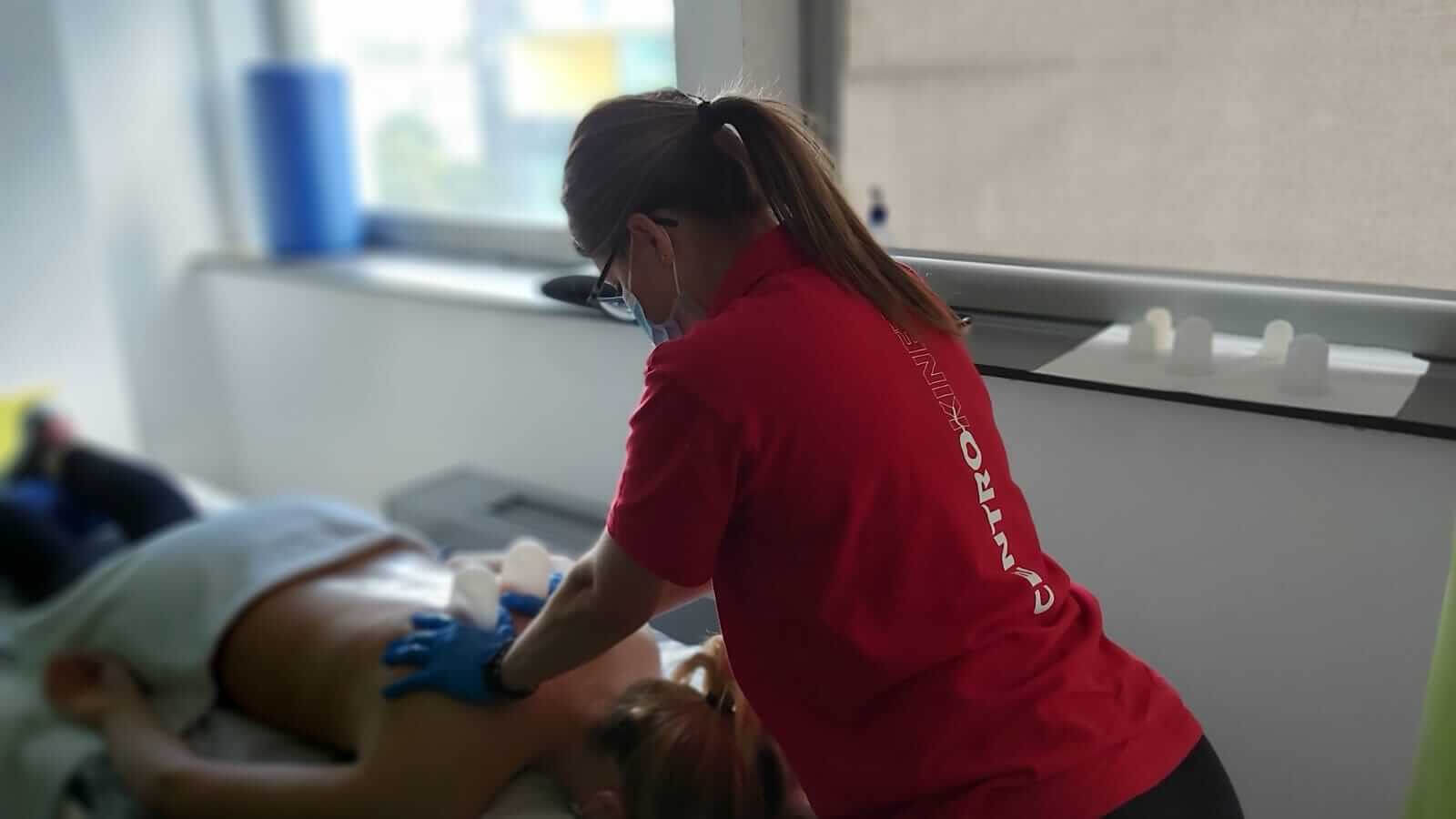 | 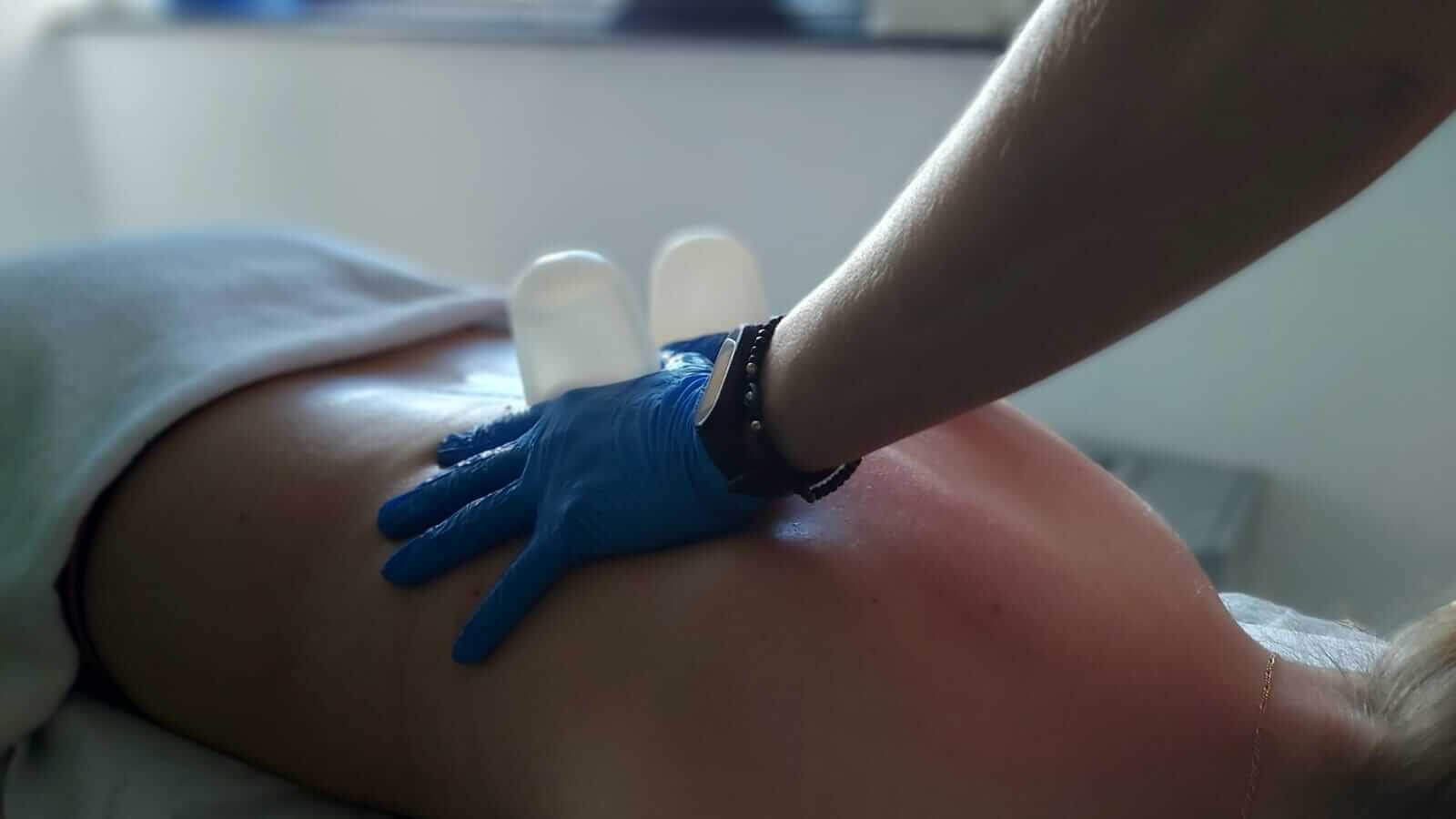 |
What to consider before opting for suction cup therapy
Several things should be considered before following suction cup therapy. Although it is safe when practiced by a professional such as a licensed acupuncturist, the patient should continue to be educated on the risks associated with the use of suction cups, as mentioned above. It is also recommended that the patient become familiar with the entire process from start to finish.
Before any therapy session, the patient will discuss with the physician any concerns they may have, as well as why they should do suction therapy. The doctor will ask about the type of pain the patient has and where it is located so that they can put the glasses in the most beneficial areas to help relieve the pain.
The back is the most common area that is used for suction cup therapy, as the back has five meridian lines that provide perfect placement for cups. Depending on the conditions and reasons why the patient is receiving therapy, the doctor will determine how many cups to use and how long to place each cup. The time for each cup can vary between five and ten minutes, depending on the severity of the condition.
While suction cups can cause more bruising and swelling on the skin's surface, the procedure is relatively painless. The signs that appear after a therapy session can last from a few days to a few weeks. Bruising is not caused by any form of gross trauma. Therefore, they should not be painful.
When the glasses are applied to the skin, the patient may feel tight or pulled skin sensation because the skin is drawn into the cup. If this burning sensation causes any pain, then it is recommended that the patient notify the doctor immediately so that the technique he uses can be adjusted as needed, and to provide an increased level of comfort and induce relaxation during the session.
Cupping is ideal for those who want to improve their energy flow, encourage detoxification of the body, relieve pain, relax tense muscles, or encourage relaxation. However, if the patient is prone to bleeding easily or it is a pregnant woman, then it is not recommended as an alternative form of treatment. Other conditions that should be discussed before using cupping include:
Anyone with muscle spasms or bone fractures.
- If the patient is suspected of having deep vein ulceration or thrombosis.
- If the patient has a slight pulse felt by the practitioner.
- If the patient is experiencing or may be suspected of having any form of cancer, such as metastatic cancer, which has spread from one part of the body to another.
The suction cup method used as a traditional Chinese treatment can be used alone or in combination with an alternative therapy, such as acupuncture. Aspiration and negative pressure that occurs during a therapy session are said to help encourage blood flow and help sedate the nervous system.
Why athletes use this alternative medicine
Many athletes use suction cup therapy as alternative medicine.
Some of these athletes are Michael Phelps and the American men's Olympic gymnastics team, as well as some members of the American Track and Field team.
It is a very common practice among athletes and is considered an effective treatment to increase movement and calm tired muscles. Increasing blood flow to treated areas helps promote muscle healing. It is especially useful when the patient is competing in a sport, such as swimming, gymnastics because they constantly use these muscles. Increasing blood flow will help relax these muscles and improve the range of motion of athletes.
Many athletes use other methods in combination with cupping, such as manual therapy, sauna, and cold therapy compression. It is a way for these athletes to release the muscles and tendons that they constantly use in their sport. It is also beneficial when combined with massage therapy and has helped athletes considerably with managing their pain during workouts and sporting events.
Pseudoscience in sports
Results
When a patient begins cupping therapy, the first few sessions may be more intense than the following. An individual's body will need time to adjust to the new treatment, and as the treatment continues, the discomfort will become less and the bruising and swelling will be less noticeable.
After several repeated sessions of suction cup therapy, the patient may begin to feel the need for sleep or may have an inability to fall asleep. There may be cases of increased odor, emotional release, and muscle aches. Muscle disease can mimic the effects that an individual may experience after intense training. These effects will diminish as treatments continue and vary from person to person.
After the first session of suction cup therapy, the patient should experience a significant improvement in pain or congestion. The symptoms for which he was treated will become more and more severe as the treatments continue. Joint stiffness will have a significant improvement and hormone production could be improved. Muscles will begin to stretch and relax, and inflammation should be relieved because stagnant blood and toxins are released from the body.
Suction cup therapy will begin to strengthen the patient's immune system and facilitate the movement of Qi and blood in the body. The patient will experience a general feeling of health and energy from the first treatment, a feeling that will become more visible as toxins continue to be removed from the body and continuous suction therapy sessions.
The continuity and schedule of therapy sessions should be discussed with the therapist to determine the length of time and number of treatments that will be needed to achieve the desired results. It is better if the therapy is performed in several sessions over a longer period.
Cupping is safe and can be done weekly, but as treatments continue, the frequency of visits may be reduced because the levels of toxins in the patient's body should be relatively low. Cupping sessions can be scheduled weekly or monthly, depending on the individual situation and the patient's concerns.
Most practitioners will wait to perform another therapy session until they see that the red marks left from the previous session are almost completely gone so that no inflammation of the skin occurs. It is always best to let any bruises or muscle aches heal before another session so that the level of discomfort can be reduced.
The time spent at each session of traditional Chinese medicine can also be discussed. The time will vary depending on the conditions or treatments that the patient is looking for. Therapy cups can be placed on the skin for three to twenty minutes at a time, taking care not to leave them too long so as not to cause burns or skin irritations.
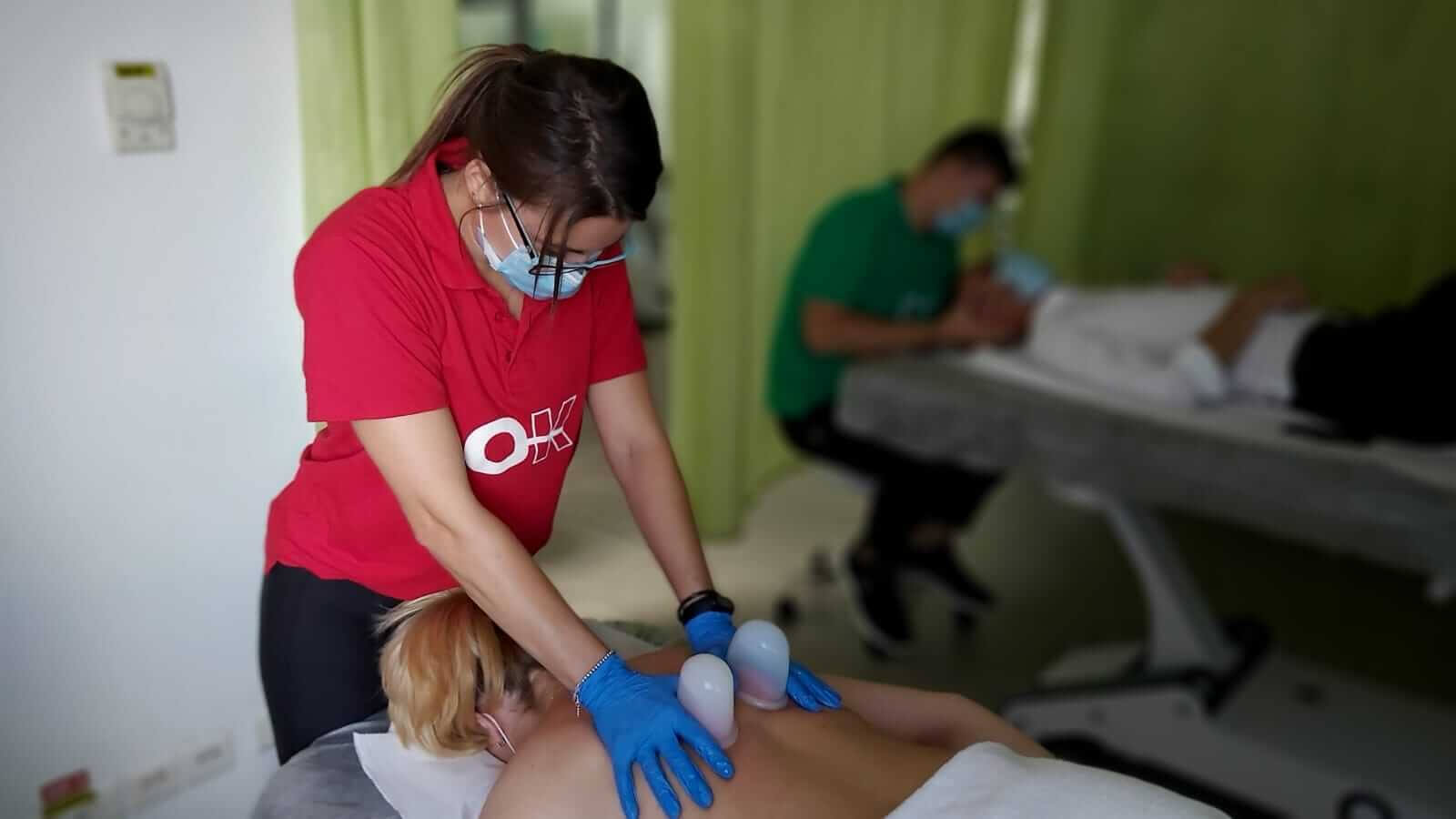 |  |
Cupping is a suitable and affordable option if the patient is looking for a relatively painless and more natural approach to pain management and as a method of relaxation.
Cupping is performed within the spine recovery department or the physiotherapy department by our physiotherapists.
Prices
You can find here a detailed list of the prices of individual services. But any correct recovery process is based on a mixed plan of therapies and procedures, customized according to the condition, stage of the condition, patient profile, and other objective medical factors. As a result, in order to configure a treatment plan, with the therapies involved and the prices related to the plan, please make an appointment here for an initial consultation.
SUCCESSFUL RECOVERY STORIES
MAKE AN APPOINTMENT
FOR AN EXAMINATION
See here how you can make an appointment and the location of our clinics.
MAKE AN APPOINTMENT

